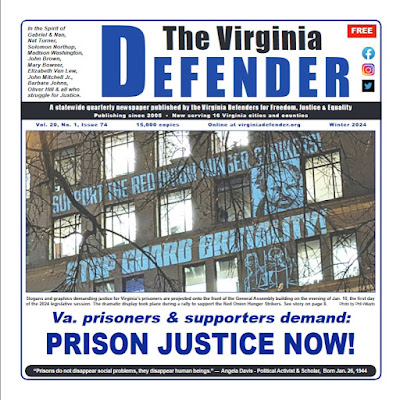Endorse the Park
Why Endorse the Community Proposal?
Download a PDF of this statement.In the decades before the end of the U.S. Civil War, the area of downtown Richmond known as Shockoe Bottom was the epicenter of the U.S. domestic slave trade. The district included nearly 100 sites associated with that barbaric business: 40-50 auction houses; dozens of slave trader offices, many with holding pens; six to eight slave jails; and many supporting businesses.
Richmond was the main supplier of the human commodity. In some years as many as 10,000 women, men and children were sold from Shockoe Bottom to other slave-trading centers such as Charleston, New Orleans, Savannah and Vicksburg. By the time of the Civil War, the trading in human beings was Virginia’s biggest industry and provided much of the capital that built the city of Richmond, the state of Virginia and beyond. The trade was so large that today the majority of African-Americans could trace some ancestry to Shockoe Bottom.
For many years, the significance of this small district was deliberately ignored. The land was paved over and used mainly for parking lots. It wasn’t until the early 1990s that local advocates of African-American history began the long process of research and community struggle that has reclaimed part of this story.
Today there is the Trail of Enslaved Africans that traces the path enslaved people were forced to follow between the slave jails of Shockoe Bottom and the ships awaiting them at Manchester Docks on the James RIver. In 2008 a city-sponsored archeological dig discovered the long-buried but still-intact stone foundation of the jail and related buildings owned by the notorious slave trader Robert Lumpkin. In 2011, Virginia Commonwealth University finally surrendered to a vigorous community campaign that demanded that the state university remove its parking lot that covered what today is known as the African Burial Ground. And in 2015 a broad community struggle defeated the fourth business and developer promoted campaign to build a commercial baseball stadium in the Bottom.
That same year, the Defenders led a five-month-long series of open community discussions about how to best preserve this sacred ground. This process, carried out at no cost to taxpayers, received important technical support from the National Trust for Historic Preservation and Preservation Virginia, with participation and recommendations from area cultural and preservation organizations and individuals as well as community members, with an emphasis on the voices of Richmond's Black community.
The result was the proposal for a nine-acre Shockoe Bottom Memorial Park, to include the site of Lumpkin’s Jail, also known as the Devil’s Half-Acre, the African Burial Ground and two city blocks where other slave jails and trader offices once stood. The area is modest in size, but large enough to convey the enormity of the story - and just large enough to block any more attempts at inappropriate commercial development.
As envisioned, the park would include an interpretive center, water features, gardens, pathways, monuments, educational markers and interactive technologies, as well as contemplative and performance spaces. The proposal includes provisions for economic development in the surrounding area, with the understanding that the Black community must be the first beneficiary of that development.
The proposal for a nine-acre Shockoe Bottom Memorial Park has won broad local, national and international support (See list of endorsers HERE.) But the same business interests that promoted the stadium proposals are opposed to memorialization and instead want to use this property for private gain.
Located within a day’s drive of half the country’s population, these nine acres include much of what physically remains of this remarkable history and should rightfully be protected and developed as a national site for truth, reconciliation and progress. Our country's stormy evolution from enslaved to free society is ongoing. As a nine-acre campus of beautifully and thoughtfully designed memorial and educational spaces -- walkable, environmentally beneficial and technologically connected to our city’s wealth of museums, libraries, universities and public schools -- Shockoe Bottom Memorial Park will be a fitting legacy for this generation of Richmonders to gift to our children, of all races and nations.
Many people have devoted many years to uncovering the story of Shockoe Bottom. They have created the Trail of Enslaved Africans, uncovered the site of the Devil’s Half-Acre, reclaimed the African Burial Ground and blocked attempts to build a commercial ballpark on this sacred ground.
Our task now is to convince Richmond’s elected officials that it is the city’s historic duty to reclaim and properly memorialize a section of this sacred ground, before the story of what happened here - the suffering, the endurance and the resistance - is lost to generations to come.
You can help by endorsing the memorial park. Please sign the endorsement form above. Take a stand for Black History and for a truthful telling of this country’s difficult story.
